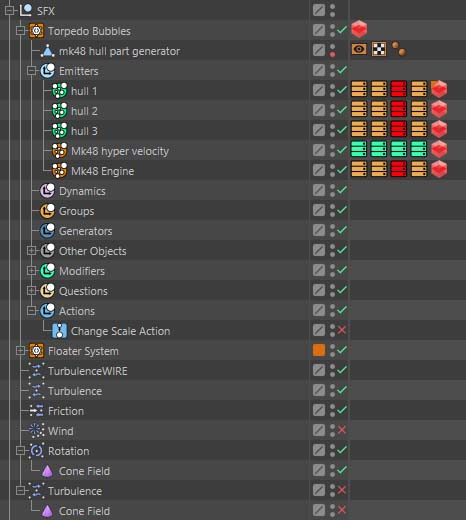Pacific Fleet Submarine Museum
Occasionally as a designer and artist you land a project and opportunity that is just so perfect it feels tailor made for you. This is one of those moments. The Pacific Fleet Submarine Museum in Honolulu brought me onboard to produce animations as part of their exhibits. It couldn’t be a cooler topic: torpedoes and submarines! I find that stuff fascinating, I mean who wouldn’t?! The museum was expanding several exhibits, and needed videos to help demonstrate how three different torpedoes designs through US history functioned and were fielded. So cool.
The history of torpedo technology is fascinating, and having some prior knowledge on the topic certainly assisted with the research necessary. The venerable Mk-14 steam torpedo, the electric Mk-37, and the modern wire-guided Mk-48 torpedo are featured in the three videos produced.
I’ve yet to visit the museum, but they should be on display for your enjoyment and education.
The Technical Deets:
I’m not a shader artist/engineer, so building accurate over/underwater caustics and lighting was an exceptional challenge that required a lot of trial and error. I utilized a mix of compositing multiple plates; depth maps, particle plates, caustics, etc, to provide a sense of underwater visible distance (which was exaggerated substantially for effect).

Working off of existing engineering specs, each version was painstakingly modeled in C4D, and textured with substance painter, and rendered with Redshift.
There’s no playbook for a lot of the particle systems that were required for this project; high pressure air bursts from torpedo tubes, underwater explosions, surface effects for torpedo explosions, propeller cavitation. This stuff is all my jam, of course, but to get the exact look and feel I was going for, a substantial amount of tweaking and trial and error. I utilized X-Particles for C4D, robust, but challenging system.
The Take
system in Cinema 4D is a damn godsend. If you’re not familiar with it, essentially it allows you to set up all your necessary objects, and animate separate “takes,” each unique shot and camera angle can all be individually customized, and any changes on the parent-level apply downward. The whole thing is contained within a single file, and enables for easy batch-rendering. So much time and sweat was saved iterating within the Take system, on this project that consisted of over 40 individual shots, each with as many as 7 different composite plates in a cryptomatte.
This is the project that made me fall in love with the EXR format and Cryptomattes, which kept output files nice and tidy; each EXR file rendered is an individual frame, containing all relevant composite layers (As opposed to each composite layer frame being its own separate file). After Effects powered through the compositing for the individual shots (EXtractoR plugin is a must-have), and the final edit was fine-tuned in Premiere.
There’s no playbook for a lot of the particle systems that were required for this project; high pressure air bursts from torpedo tubes, underwater explosions, surface effects for torpedo explosions, propeller cavitation. This stuff is all my jam, of course, but to get the exact look and feel I was going for, a substantial amount of tweaking and trial and error. I utilized X-Particles for C4D, robust, but challenging system.
The Take
system in Cinema 4D is a damn godsend. If you’re not familiar with it, essentially it allows you to set up all your necessary objects, and animate separate “takes,” each unique shot and camera angle can all be individually customized, and any changes on the parent-level apply downward. The whole thing is contained within a single file, and enables for easy batch-rendering. So much time and sweat was saved iterating within the Take system, on this project that consisted of over 40 individual shots, each with as many as 7 different composite plates in a cryptomatte.
This is the project that made me fall in love with the EXR format and Cryptomattes, which kept output files nice and tidy; each EXR file rendered is an individual frame, containing all relevant composite layers (As opposed to each composite layer frame being its own separate file). After Effects powered through the compositing for the individual shots (EXtractoR plugin is a must-have), and the final edit was fine-tuned in Premiere.


